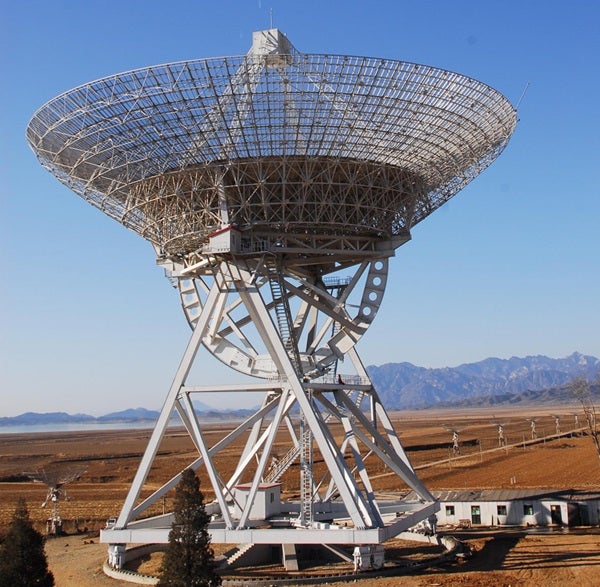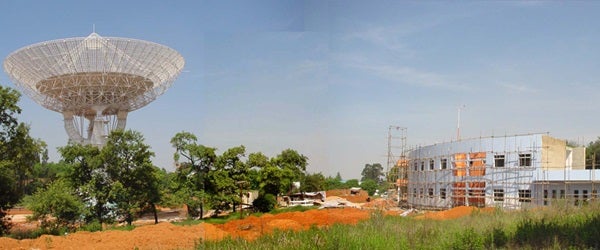China’s first lunar spacecraft, Chang’e 1, is set to launch in April. Although China’s existing S-wave-band space-monitoring network can meet the demand of a Shenzhou-series manned spacecraft, the diameter is not large enough for an interplanetary mission. In preparation for the mission, China built two VLBI antennae in 2006, one in Beijing and another in Yunnan, in southwest China.
The antennae measure 164 feet (50 meters) and 131 feet (40m), and both are undergoing tests now. According to Li Yan, director of the National Astronomical Observatories, Chinese Academy of Sciences, China now has four large radio telescopes within 1,900 miles (3,000 kilometers) of each other. The spacecraft will be launched from a CZ-3A rocket from Xichang Spaceport, in the Sichuan province of southwest China, and will enter a geostationary orbit before heading for the Moon.
China is just beginning to establish its deep-space network. Currently, two 60-foot (18m) antennae exist in Qingdao (in the Shandong province) and Kashi (in western Xinjiang); some smaller antennae exist in the Xi’an Satellite Monitoring & Control Center; and at Xichang Spaceport, there are four Yuanwang series space-monitoring ships. Yuanwang 5 and 6 are being built in the Jiangnan Shipyard of Shanghai and will be operational soon.
According to Ouyang Ziyuan, lead scientist of the Chinese lunar-exploration project, during the flight of Chang’e 1, the European VLBI network will join China’s deep-space monitoring and surveying. During ESA’s Smart 1 lunar mission, China’s 50m VLBI antenna in Beijing joined the monitoring work with two 25m VLBI dishes in Shanghai and Urumchi, proving that China’s large antennae are at the same level as Europe and the United States’.
However, compared to the U.S. Deep Space Network, China’s network is still in its infancy. China plans to build more large antennae in order to meet the demands of its ambitious, future deep-space missions.











